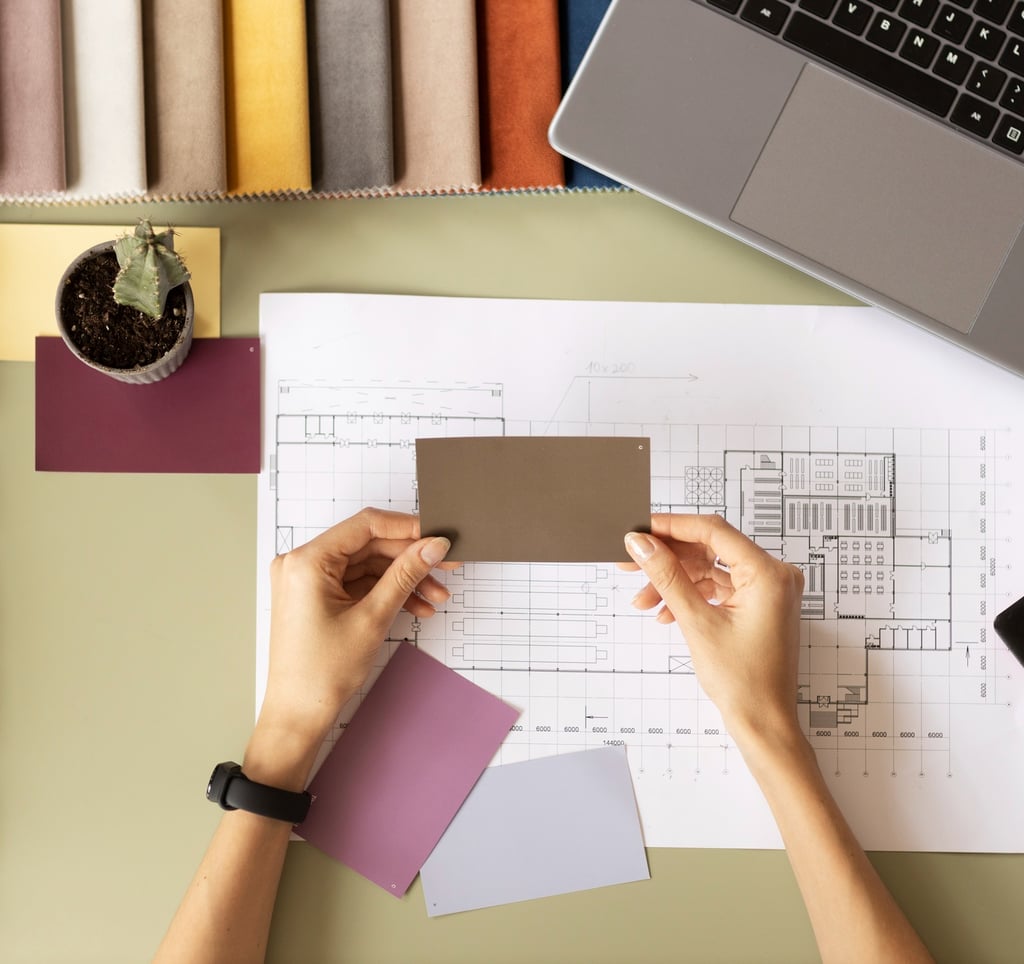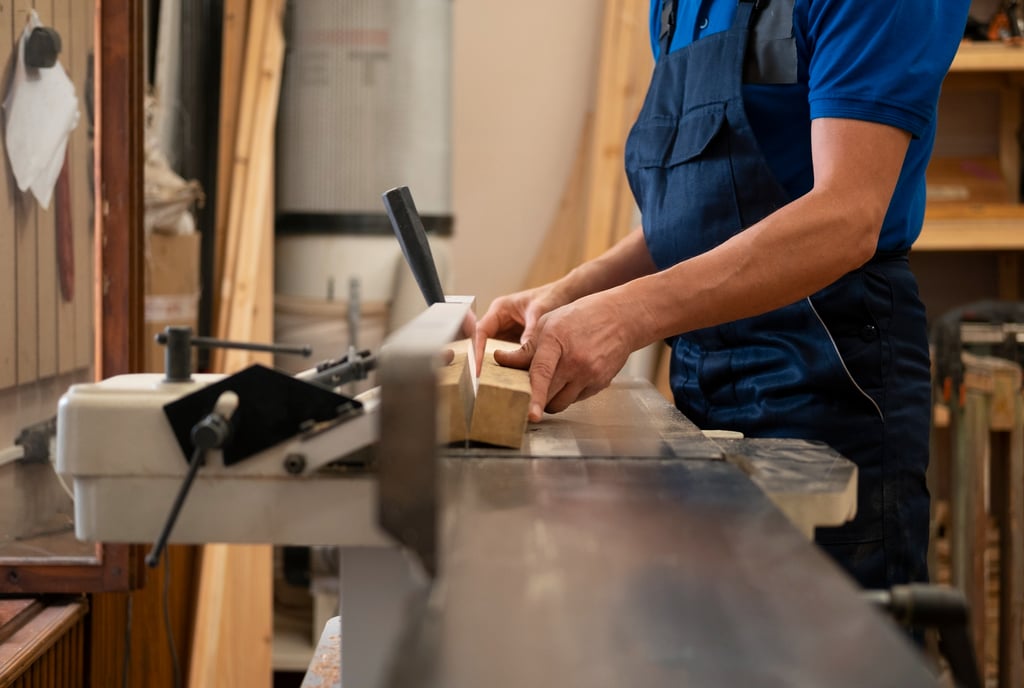Building Your Dream Home Just Got Easier (Seriously!)
EXECUTION
Remember those old movies where interior designers were surrounded by dusty blueprints, sawdust, and a million frantic workers? Well, thankfully, the world of interior design execution has had a major glow-up! These days, turning your vision into a reality isn't the complicated, headache-inducing process it used to be. In fact, it's smoother, faster, and way more user-friendly than you might think.
So, how exactly has the "getting it built" part of interior design become so much simpler? Let's break it down!
Complex Designs? No Problem for Factory-Made Furniture!
This is a game-changer! Gone are the days when intricate designs meant a carpenter spending weeks meticulously crafting every piece onsite. Now, a huge chunk of your interior design, especially the furniture, is factory-made using ply and laminate.
Why is this awesome?
Precision Perfect:
Factories use advanced machinery, ensuring every cut and joint is absolutely precise. This means your complex designs, be it a geometric shelving unit or a custom entertainment centre, come out looking exactly as envisioned, with crisp lines and perfect finishes.
Strength & Durability:
Ply and laminate, when expertly processed in a factory, create robust and long-lasting furniture. You're getting quality that's built to last.
Variety Galore:
The range of laminates available today is mind-boggling! From realistic wood grains to vibrant solids, subtle textures to high-gloss finishes, you can achieve any aesthetic without compromising on practicality. This means complex design ideas are no longer limited by material or craftsmanship.
Machinery Makes it a Breeze: Timesaving & User-Friendly
The advent of sophisticated machinery in furniture manufacturing and even on-site tools has revolutionized the entire process.
Speed Demons:
What used to take days or weeks of manual labour can now be completed in hours by machines. This drastically cuts down the overall project timeline.
Consistent Quality:
Machines don't get tired or make mistakes. This means a consistently high level of quality across all manufactured components, leading to a much smoother assembly process.
Less Human Error:
With precision cuts and automated processes, the chances of human error are significantly reduced, leading to fewer rework issues and delays.




Less On-Site Chaos, More Calm!
Perhaps one of the biggest benefits of modern interior design execution is the dramatic reduction in on-site work.
Modular & Ready-to-Assemble:
A large portion of your furniture and built-in units arrive at your home as prefabricated modules. Think of it like high-end, custom-fitted LEGOs for your house!
Clean & Quick Assembly:
Instead of sawdust flying and loud hammering for weeks, the on-site process is often more about assembling pre-made components. This means less mess, less noise, and significantly quicker installation times.
Minimized Disruption:
For homeowners, this is fantastic! Your daily life isn't thrown into disarray for as long, allowing you to enjoy your newly designed space much sooner.
Material Selection? Not a Headache Anymore!
Choosing materials used to be overwhelming, often involving numerous trips to different suppliers and trying to visualize how disparate elements would come together. Now, it's a much more streamlined experience.
Comprehensive Showrooms & Samples:
Design studios and furniture manufacturers often have extensive showrooms or provide a wide array of samples that perfectly represent the final product. You can see, touch, and compare materials like laminates, veneers, fabrics, and finishes all in one place.
Virtual Visualization:
Many designers now use 3D rendering and virtual reality tools. This means you can "walk through" your designed space, see how different materials look under various lighting conditions, and make informed decisions without guesswork.
Expert Guidance:
With so many options, designers are more adept than ever at guiding you through material selections, ensuring they not only look great but also suit your lifestyle and budget.
In a nutshell, interior design execution has transformed from a labour-intensive, often unpredictable ordeal into a far more efficient, precise, and enjoyable journey. Thanks to factory-made components, advanced machinery, reduced on-site work, and simplified material selection, building your dream home is no longer a complicated dream, but a beautifully streamlined reality!
FOQ
Q1: How does factory-made furniture, especially with ply and laminate, simplify complex interior designs? A1: Factory-made furniture utilizes advanced machinery for precise cuts and finishes, allowing for the easy execution of intricate and complex designs that would be difficult or time-consuming to create manually on-site. The wide variety of laminates also offers extensive design possibilities without compromising on durability or quality.
Q2: In what ways do modern machinery and manufacturing processes save time and make the interior design execution process more user-friendly? A2: Modern machinery drastically reduces the time needed for crafting furniture and components, often completing tasks in hours that used to take days. It also ensures consistent quality and precision, minimizing human error and the need for rework, which makes the overall process smoother and more predictable for both designers and homeowners.
Q3: How does the shift to pre-fabricated, factory-made components reduce on-site work and disruption for homeowners? A3: A significant portion of the interior elements, especially furniture and built-in units, arrive at the site as pre-assembled modules. This means less noisy, messy, and time-consuming cutting and construction work happening inside your home. The on-site process primarily involves quick and clean assembly, leading to much less disruption to your daily life and faster project completion.
Q4: What makes material selection less of a "headache" in modern interior design compared to the past? A4: Material selection is simplified by comprehensive showrooms that consolidate a wide range of samples in one place, allowing you to see and touch options like laminates, veneers, and fabrics easily. Additionally, virtual visualization tools like 3D renderings and VR allow you to preview materials in your actual space before making final decisions, eliminating guesswork and potential costly mistakes.
Q5: Does this reliance on technology mean interior design is becoming less creative or personalized? A5: Absolutely not! In fact, technology enhances creativity and personalization. By streamlining the execution of complex designs and offering vast material options, designers are freed up to focus more on innovative concepts and bespoke solutions. The tools simply make it easier and more efficient to bring highly personalized and intricate visions to life, rather than limiting them.



